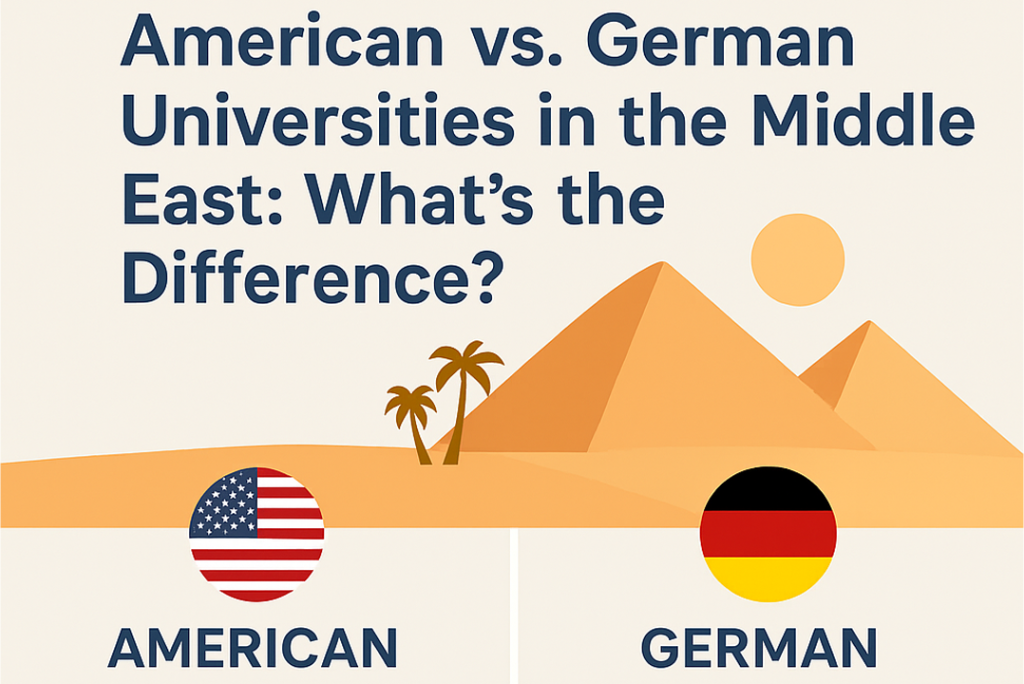
Introduction: Two Worlds, One Region
The Middle East has become one of the most dynamic education hubs in the world. But while students often hear about “American-style” or “German-model” universities, very few truly understand what makes them different — especially in the Middle Eastern context.
With institutions like American University in Cairo, American University in Beirut, American University in the Emirates on one side, and German Jordanian University, German University in Cairo on the other, the region offers students a fascinating choice:
👉 Do you want an American liberal arts approach or a German applied-science model? Let’s dive deeper.


